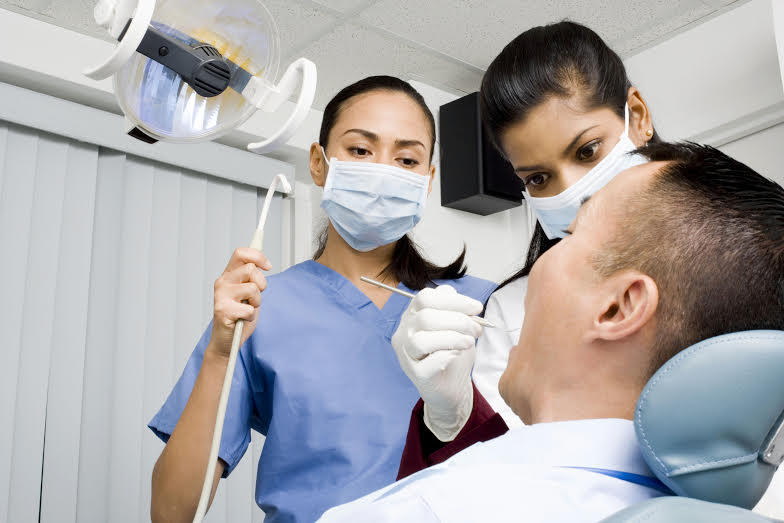

Is your dental hygiene department stuck in the 20th century? Is the hygienist doing the same thing over and over again, expecting the same result for all patients? This can be tedious for the hygienist, provide a disservice to patients, and cause the practice to miss revenue opportunities. Also, a lack of motivation or sense of accomplishment can contribute to burnout. The practice can suffer from a lack of undiagnosed periodontal disease that could generate revenue and prevent potential legal challenges. A complete overhaul might be in order, but let's start small with a few easy changes that can be made today.
One of the statements I hope I never hear again is, "My dentist will not let me do that." I am talking about things like oral cancer screening, probing, and providing oral hygiene instruction. Some of you are thinking, "That cannot be true," but I assure you I keep on hearing this from dental hygiene clinicians.
This causes frustration for the hygienists and is a sign of shortsightedness by the dentist. Instead, take time to share ideas, explore ways to maximize patient contact with billable procedures, and reevaluate over time.
Hint: If you try something new and it is not working in your practice, then stop. Problems arise when systems or practices are not working and no one is willing to address the issue.dental laser handpiece
The American Academy of Periodontology states that a comprehensive periodontal examination includes the following: probing depths, locating gingival margins (clinical attachment levels), identifying the presence and extent of plaque and calculus, evaluating soft-tissue appearance, examining mucogingival relationships, looking for recession, and detecting bleeding on probing.1 For more severe cases, the presence and location of furcation involvement and presence and type of exudate are included.
A full set of radiographs is also used to note any bone loss or establish a baseline.1 If there is bone loss on the radiographs, the periodontal chart should reflect these areas based on the clinical measurements and observations.
Yes, this will take more time and should be scheduled and priced accordingly. The correct procedure code is D0180, comprehensive periodontal evaluation for a new or established patient. For any disease noted, a treatment plan should be developed with the patient, consent to treat obtained, and appointments scheduled. This provides billable services for the practice, utilizes the dental hygienists' skills in assessment and critical thinking, and might prevent legal action down the road.
Hint: If it is not written down, it did not happen. Even if there are no significant findings, a statement needs to be entered into the chart noting that the periodontal condition was assessed and evaluated.
Dental hygienists are the primary preventive specialists in the dental field. Most hygienists are well versed in the latest findings on oral care products and can match patients with the best aids to achieve optimum oral hygiene. It is about getting patients to a healthy state that they are motivated to maintain.
One challenge is how to bill for the time needed to educate and promote behavior change. Rest assured, this is a billable procedure. Code D1330 is for oral hygiene instruction. It can take time and several steps before patients actually change their behaviors.2
I often hear that "insurance will not pay for oral hygiene instructions." It is the responsibility of practitioners to inform patients of their dental needs based on risk assessment and examination. Then, it is the responsibility of practitioners to work with patients to develop treatment plans that fit their lifestyles and values. Don't forget to document your conversations and recommendations in patients' charts.dental laser tips
Hint: Incorporate time during other visits for oral hygiene instruction and establish a fee schedule. This is a valuable service for patients and the practice. Long-term success for all dental work depends on a healthy periodontal foundation.
This goes hand-in-hand with a comprehensive periodontal program. Providing products in the office can help motivate patients and save time. Patients are motivated because they see how important it is that they start the right way. They also become invested in their oral health. Patients can try the products in the office and learn how to use them correctly.
Many manufacturers provide products at a discount to dental offices to help generate revenue. This is not a bad thing. Dentistry is a business and people pay for expertise. Providing additional services such as products for purchase can save time and help market your practice.
Hint: Some offices incorporate the cost of the products in the fees for dental hygiene procedures.
If you have not heard by now, dental floss is a thing of the past. Many dental hygienists and dentists are seeing the light-people will not floss. Surveys and research have continued to show people do not floss, don't feel comfortable flossing, and often cannot master the technique.3-5 The most recent survey conducted by the Harris Poll on behalf of the American Academy of Periodontology reported more than a quarter of US adults lie to their dentist or hygienist about how often they floss.6 This survey also reported that one-third (36%) would rather do an unpleasant activity such as cleaning the toilet instead of daily flossing.
Tools for interdental cleaning include floss, interdental brushes, wood sticks, floss holders, rubber tips, air flossers, and water flossers. According to the research, floss does not reduce interproximal decay nor has it shown efficacy in reducing inflammation; interdental brushes are effective for periodontal patients with wide spaces; wood sticks and rubber tips are not designed to reach interdentally; and air flossers lack published research.
Hint: Want to make your patients happy? Give them a device that is effective and easy to use. Products like the Waterpik Water Flosser rise to the top.